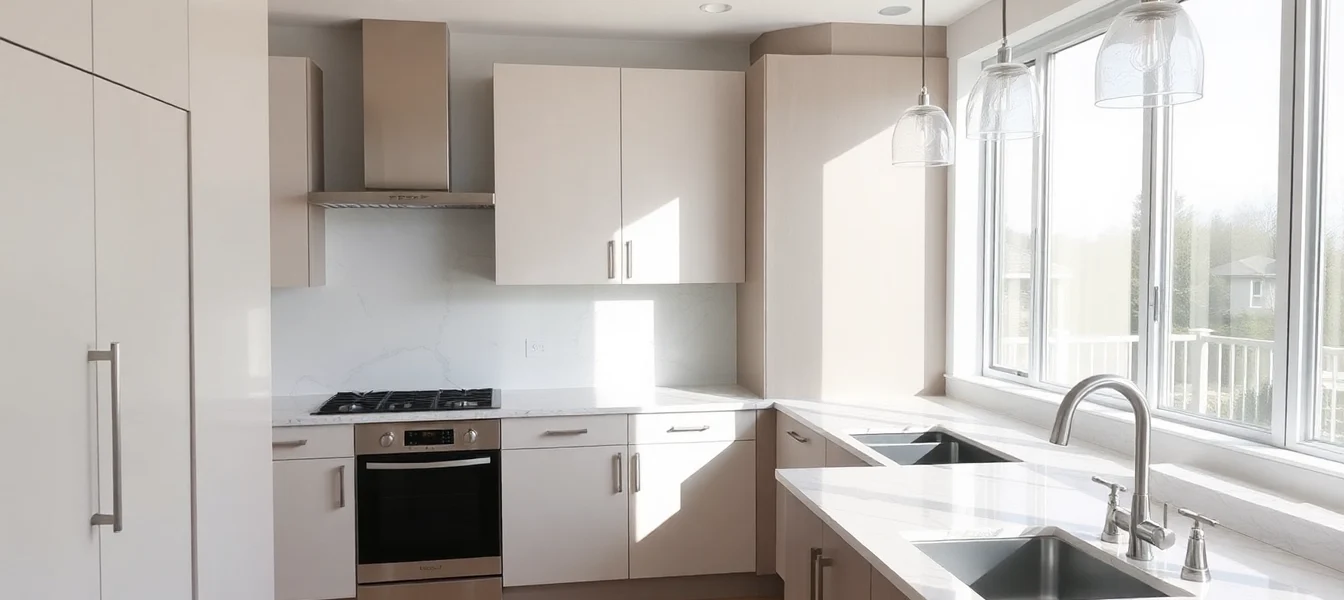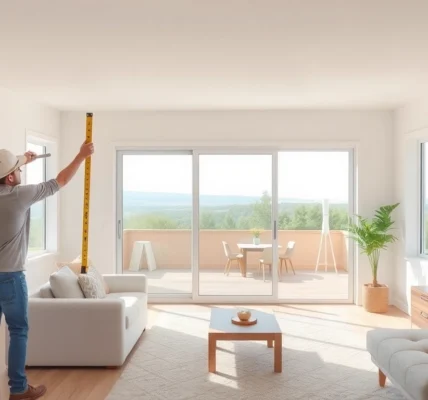Understanding the Basics of Remodeling
Remodeling is a transformative process that fundamentally alters the design, functionality, and aesthetics of a space. Whether it’s updating a kitchen, enlarging a living room, or reconfiguring a bathroom, remodeling allows homeowners to tailor their environment to better suit their lifestyle and preferences. While many associate remodeling strictly with renovation, it encompasses a broader scope that involves changing the structure, layout, or purpose of a space. For those considering such substantial updates, understanding what remodeling entails is crucial for planning effectively and achieving desired outcomes. To explore professional remodeling services, visit Remodeling experts who can guide you through the process.
What Does Remodeling Entail?
Remodeling involves a comprehensive overhaul of a space, often including structural modifications, redesigning interior layouts, and upgrading fixtures and finishes. Unlike simple cosmetic changes, remodeling seeks to improve the overall function and flow of a home or commercial space. This might involve tearing down walls to open up an area, adding new rooms or extensions, installing new flooring, or replacing outdated systems such as plumbing and electrical wiring. The goal is to transform the existing environment into a more modern, efficient, and aesthetically pleasing space. For example, a kitchen remodel might include expanding counter space, modern appliances, and contemporary cabinetry while ensuring the layout promotes better workflow and accessibility.
Successful remodeling projects require a clear understanding of scope, budget, and design preferences. Engaging experienced contractors is vital to navigate the complexities involved, from obtaining necessary permits to coordinating tradespeople and sourcing materials.
Key Differences Between Remodeling and Renovation
While these terms are often used interchangeably, understanding their distinctions helps shape appropriate expectations and planning strategies. Renovation focuses on restoring and improving a space’s appearance without altering its fundamental structure. Examples include repainting walls, replacing flooring, or updating fixtures—cosmetic enhancements that increase aesthetic appeal and comfort.
Remodeling, on the other hand, involves reconfiguring or altering the structure of a space to change its purpose or improve its functionality. This could mean removing non-load-bearing walls to create an open-plan layout, converting a garage into a living area, or adding a new bathroom. Remodeling typically requires more extensive planning, permits, and potentially, higher budgets but offers a more dramatic transformation.
Both approaches significantly add value to a property and can be combined in a single project depending on your goals. For example, a homeowner might first renovate by updating fixtures and then remodel by reconfiguring the layout for better flow and use of space.
Common Remodeling Projects for Homes
Remodeling is highly versatile and suitable for nearly every area within a home. Some of the most popular projects include:
- Kitchen Remodeling: Upgrading appliances, cabinetry, countertops, and layout to enhance functionality and style.
- Bathroom Remodeling: Modernizing fixtures, improving storage, and increasing energy efficiency.
- Basement Finishing: Transforming unfinished basements into functional living or entertainment spaces.
- Room Additions: Extending living space by adding bedrooms, sunrooms, or home offices.
- Open Floor Plans: Removing walls to create spacious, interconnected living areas.
- Exterior Refreshes: Updating siding, roofing, and landscaping as part of overall home improvement.
Each project should align with the homeowner’s lifestyle, budget, and long-term goals. Consulting with a professional remodeling contractor can help prioritize projects based on value, feasibility, and personal preferences.
Planning and Budgeting Your Remodeling Project
Setting Realistic Expectations and Goals
Before embarking on a remodeling project, establishing clear and realistic goals is essential. Consider what areas need improvement, which features are non-negotiable, and how the project fits into your overall vision for your home. Conducting a thorough needs assessment involves inspecting current conditions, noting pain points, and defining the desired end state.
Communicating these goals effectively to your remodeling team helps align expectations, avoids scope creep, and ensures outcomes match your vision. For example, if energy efficiency is a priority, specify insulating walls, upgrading windows, or installing high-efficiency HVAC systems. Setting priorities also guides decision-making and resource allocation throughout the project.
Estimating Costs and Securing Financing
Remodeling costs vary widely depending on project scope, materials, labor, and geographic location. It’s crucial to develop a detailed budget early on, including contingencies for unexpected expenses. Industry data suggests that high-quality kitchen remodels might range between $20,000 and $50,000, while larger-scale additions or structural changes could exceed $100,000.
Securing financing can involve traditional bank loans, home equity lines of credit, and specialized renovation loans. Performing a cost-benefit analysis helps determine whether a project increases your home’s value sufficiently to justify the investment. Using detailed estimates from licensed contractors, you can negotiate better terms and plan accordingly.
Choosing the Right Contractors and Design Teams
The success and quality of your remodeling project hinge on selecting skilled professionals. Start by researching local contractors with proven experience and good reviews. Look for licensed, insured, and bonded firms, and request portfolios of previous work to assess their style and quality.
Interview multiple candidates, ask for detailed proposals, and verify references. Collaborating with an architect or interior designer may be beneficial for complex projects, ensuring that design ideas translate effectively into construction plans. Effective communication and trust with your team are key to avoiding delays, budget overruns, and quality issues.
Design Trends and Ideas in Remodeling
Popular Styles and Color Palettes
Staying current with design trends ensures your remodel feels modern and timeless. Popular styles include Scandinavian minimalism, industrial chic, farmhouse rustic, and contemporary elegance. Color palettes tend toward neutral tones like whites, beiges, and cool grays, complemented by bold accents in black, navy, or metallic finishes.
Incorporating trending design elements—such as matte black fixtures, open shelving, or textured wall panels—can elevate your space’s aesthetic appeal. A well-balanced blend of current trends with personal taste ensures your home remains stylish and functional for years to come.
Innovative Materials and Technologies
Advances in materials and smart technologies significantly enhance the value and convenience of remodeling projects. Examples include quartz countertops, durable laminate composites, and eco-friendly flooring options like bamboo or reclaimed wood.
Smart home integrations—such as automated lighting, climate control, and security systems—are increasingly popular. These innovations not only improve lifestyle but also add resale value. Choosing sustainable, energy-efficient materials aligns with modern environmental standards and reduces long-term costs.
Maximizing Space and Functionality
Effective space utilization remains a paramount concern, especially in urban or smaller homes. Techniques include multi-functional furniture, built-in storage solutions, and ceiling-mounted fixtures to free up valuable floor space.
Design strategies like open-concept layouts promote social interaction, while miniature or partial room divisions using glass or sliding doors improve privacy without sacrificing openness. Thoughtful planning ensures your remodel enhances both aesthetics and daily usability.
Execution: From Concept to Completion
Stage-by-Stage Remodeling Process
A comprehensive remodeling project typically follows these phases:
- Design and Planning: Developing detailed plans and selections.
- Permitting: Securing necessary approvals from local authorities.
- Demolition: Carefully removing existing structures or finishes.
- Structural Work and Framing: Building or modifying load-bearing components.
- Systems Installation: Plumbing, electrical, HVAC updates.
- Interior Finishes: Flooring, drywall, painting, cabinetry.
- Final Inspection and Cleanup: Ensuring standards are met and space is ready for use.
Managing Timelines and Quality Control
Effective project management involves creating detailed schedules, setting milestones, and maintaining regular communication. Employ project management tools or software to track progress and identify potential delays early.
Quality control is achieved through ongoing supervision, inspections at key stages, and open dialogue with contractors. Request phased approvals and detailed documentation to verify workmanship aligns with specifications.
Overcoming Common Challenges During Remodeling
Challenges such as unforeseen structural issues, supply chain disruptions, and budget overruns are common but manageable. Building contingencies into your budget, selecting reliable suppliers, and maintaining flexibility can mitigate risks.
Clear communication, detailed contracts, and proactive problem-solving foster smooth project execution. If issues arise, addressing them promptly with your team minimizes delays and additional costs.
Measuring Success and Maintaining Your Remodel
Post-Project Inspection and Adjustments
Upon completion, conduct a thorough walkthrough with your contractor to identify any deficiencies or adjustments needed. Document issues and request timely corrections.
It’s also beneficial to receive maintenance guidance specific to installed systems and materials to preserve the quality and appearance of your remodel.
Long-term Maintenance Tips
Proper upkeep extends the lifespan of your remodel. Regular cleaning, prompt repairs, and routine inspections of plumbing, electrical, and HVAC systems are vital. Use manufacturer-recommended products and adhere to maintenance schedules.
Keep records of warranties and receipts for upgrades and repairs to facilitate future servicing or valuation assessments.
How Remodeling Adds Value to Your Home
Strategic remodeling increases a property’s market value by improving functionality, aesthetics, and energy efficiency. Kicking off projects in areas like the kitchen or bathrooms yields high returns, often recouping a significant percentage of costs upon resale.
Additionally, modern updates appeal to prospective buyers, reduce ongoing maintenance costs, and enhance overall livability, making your home more competitive in the market.


